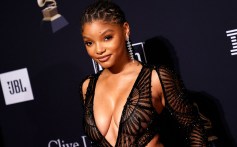International
Page: 3
Trending on Billboard
AXS is ramping up its European ambitions with two senior executive hires designed to accelerate the ticketing company’s growth across the region. The company has appointed Peter Quinlan as managing director of Europe, and Hannah Rouch as vp of marketing in Europe — both newly created roles that will operate out of London and report to AXS’s international division.
Quinlan will oversee all European operations and lead the company’s regional strategy, reporting to Blaine Legere, president of AXS International. Rouch will report to Quinlan and spearhead marketing efforts across the continent, with a mandate to expand brand awareness and drive audience growth for the ticketing platform.
Related
“Europe remains a critical growth engine for AXS, and these appointments mark an important step forward in our continued evolution,” Legere said in a statement. “Peter’s global experience and operational acumen, combined with Hannah’s deep marketing expertise and track record of execution, will be instrumental as we continue to scale and deliver across the region.”
Quinlan joins AXS after 18 years at Live Nation Entertainment, where he held leadership roles across marketing, sponsorship, and ticketing. He most recently served in a global executive capacity at Ticketmaster, overseeing commercial partnerships, payments, fraud operations and other revenue initiatives. His new role puts him at the center of AXS’s European expansion strategy at a time when the company continues to compete with Live Nation’s Ticketmaster, CTS Eventim and other players across the territory.
“There’s tremendous opportunity for growth — especially in Europe, where promoters, venues and artists are looking for innovative, transparent partners with technology that can scale and deliver,” Quinlan said. “I’m excited to help lead that charge.”
Rouch joins AXS from Gumtree/eBay, where she led a brand repositioning for the marketplace and previously held marketing leadership roles at Motors.co.uk and Bauer Media. Her remit will include strengthening the AXS brand across all European markets and building a marketing infrastructure to support both promoter clients and consumer initiatives.
“I’m thrilled and energized to take on this role at a time of significant growth for AXS across Europe,” Rouch said. “Our focus will be on strengthening our brand and reach across Europe and building out marketing as a growth engine for the business – accelerating our ability to deliver for our clients and enhancing our efforts to ‘hold the hand of the fan’ from show discovery to live event.”
The hires come as AXS continues to grow its international footprint, with partnerships spanning festivals, arenas, sports franchises, and touring artists. The expansion also reflects the company’s broader strategy to scale its global technology platform and deepen its presence outside the U.S.
“These new appointments reflect AXS’s ongoing commitment to scale, unify, and empower our international teams,” Legere added. “With this expanded leadership structure, we’re better positioned than ever to deliver world-class support for our clients and partners.”
Luminate has announced a new global data partnership with Tencent Music Entertainment (TME), marking the company’s first data collaboration with a chart that measures music engagement in China, the companies announced Wednesday (Nov. 5).
Under the agreement, Luminate, Billboard‘s longtime data partner, will integrate streaming and sales metrics from TME’s platforms — including QQ Music, Kugou Music, Kuwo Music and JOOX — into its music data platform CONNECT. The data will be reflected on CONNECT in the coming weeks and integrated into Billboard‘s global charts on a date yet to be announced. This marks the first time Chinese music market activity will be measured and reflected on the Billboard global charts.
Related
Wednesday’s news represents the latest international expansion for Luminate, which now tracks data for more than 60 countries, with other recent additions in the Middle East and North and Sub-Saharan Africa. With the addition of TME to its data set, the company will be able to identify the appeal of genres and artists originating in China across markets.
Notably, in 2023, the TME UNI Chart became the first music chart from the Chinese Mainland to be featured on Billboard‘s U.S. website.
“This partnership marks a pivotal moment for the global music industry, underscoring Luminate’s unwavering commitment to providing the most accurate and comprehensive measurement of music activity worldwide,” said Luminate CEO Rob Jonas in a statement. “As the industry’s most trusted source of streaming and sales data, our customers and partners expect as much information as possible to make the best business decisions, and we know how valuable it is for a market as large and influential as China to be represented in those insights.”
Added TC Pan, group vp of TME and president of the Content Cooperation Department, “This collaboration with Luminate represents a data-driven effort to establish a unified global content ecosystem. China is one of the most dynamic music markets in the world, and through this partnership, all content on TME’s platforms — whether domestic or international — will participate in, and even help shape, global music trends. Moving forward, TME will continue to strengthen its content ecosystem, enabling more quality content to be discovered worldwide, realizing long-term value through a journey from ‘data connectivity’ to ‘ecosystem synergy.’”
Also weighing in was Ryan Liang, vp of corporate development and content system at TME, who said, “Our partnership with Luminate marks TME Chart as Billboard’s first in-depth data partner in China,which demonstrates that its objectivity and professionalism have gained recognition from international authorities. We see this partnership as an opportunity to further strengthen the TME Chart’s role as a bridge connecting Chinese music with the global market. By integrating China’s music data into the global chart ecosystem, we are dedicated to delivering Chinese music to a broader audience and enhancing its international recognition.”
Trending on Billboard
Ed Sheeran has celebrated a major victory for his music education campaign as the U.K. government confirmed on Wednesday (Nov. 5) that music lessons will be taught more widely in schools.
Earlier today a major review of the National Curriculum – which dictates what subjects and topics are taught in non-fee-paying state schools – was published by the Labour government. The changes are the first in over a decade, and will see a number of modern topics (such as artificial intelligence) enter the classroom.
Related
The report says that arts subjects will also be “revitalised” and will see the scrapping of the English baccalaureate (EBacc), which critics – including Sheeran – said limited subject choice for students at a GCSE level (ages 14-16). Under the program, introduced in 2010 by then-education secretary Micahel Gove, pupils were required to study a minimum of seven GCSEs, including maths and a language, but the options did not include any arts subjects.
In March, Sheeran called on U.K. prime minister Sir Keir Starmer to scrap the Ebacc, deliver £250 million in spending towards music in a classroom environment and enlist more teachers for music subjects. His letter was backed by over 600 signatories, including Sir Elton John, Harry Styles, Coldplay and more. He also launched the Ed Sheeran Foundation in January to help support careers in music.
“We are at a critical point: a future of no music in state schools, no music teachers to teach, broken instruments and no grassroots venues,” he wrote in his letter. “As a young music student and aspiring artist, I benefited from opportunities in and out of school to learn and grow. Unfortunately, after decades of defunding and de-prioritising, music is no longer a right for all children – it’s a luxury for only a few.”
Sheeran’s efforts have now been recognized both by Starmer and Bridget Phillippson, secretary for education. The former sent a direct response to Sheeran saying that his “voice had been heard”. During her speech in parliament on Wednesday, Philippson credited Sheeran for speaking “so powerfully” on the subject. The final curriculum will be published in spring 2027, and schools will begin teaching it from September 2028.
Sheeran has responded to the news and the success of his letter, writing “With the help of the letter and everyone who signed it, I’m happy to say that some of the key points we raised have been recognized by the government today, marking the first change to the music curriculum in over 10 years. This involves diversifying the music genres taught in schools and removing outdated systems that stop kids from studying music and the arts as part of their school day. These changes give young people hope and the opportunity to study music.” See his full statement below.
The topic of music education was raised by a number of British artists at the BRIT Awards 2025, when winners Myles Smith and Ezra Collective called on action to help foster creativity among young people in education.
Ed Sheeran’s full statement
I set up the Ed Sheeran Foundation because every child deserves to have access to a meaningful music education, and the chance to experience the joy and confidence that musical expression can bring.
Shortly after setting up my foundation, I wrote an open letter to the Prime Minister about the critical state of music education in the UK and the fact it was slipping through the cracks. The letter was backed by so many incredible people across the music industry and education who all said the same thing: music education matters. The Prime Minister replied, recognising the challenges and expressing his commitment to change.
With the help of the letter and everyone who signed it, I’m happy to say that some of the key points we raised have been recognised by the government today, marking the first change to the music curriculum in over 10 years. This involves diversifying the music genres taught in schools and removing outdated systems that stop kids from studying music and the arts as part of their school day. These changes give young people hope and the opportunity to study music.
Without the encouragement I received in school, especially from my music teacher, I wouldn’t be a musician today, and I know so many of my peers feel the same. My music education went beyond learning and playing. It helped me find confidence in myself, and music itself was – and still is – so important for my mental health.
There’s a lot more to do to support music education, especially our music teachers, but this is a step in the right direction.
Thank you so much to everyone who signed and supported the letter.
Today is a good day.
Ed x
Trending on Billboard
Rufus Wainwright is the latest singer to change the lyrics of “O Canada.”
At Wednesday’s (Oct. 29) Game 5 of the World Series between the Toronto Blue Jays and the Los Angeles Dodgers, the Montreal-raised singer-songwriter performed a bilingual version of the Canadian national anthem at Dodger Stadium.
Related
Instead of the anthem’s usual line, “true patriot love in all of us command,” Wainwright sang: “true patriot love that only us command.”
The change has been interpreted as a protest of U.S. President Donald Trump, who has made threats of annexation of Canada as the “51st state.”
It’s the same lyrical change that fellow Canadian singer Chantal Kreviazuk made during the height of tariff tension in February, while performing at the final 4 Nations Face-Off hockey game in Boston, Massachusetts.
Kreviazuk subsequently shared a now-deleted Instagram post, confirming that the lyric change was intentional and that she wrote the words on her hand to remember them.
“I truly believe that we must stand up, use our voices and try to protect ourselves,” she wrote at the time. “We should express our outrage in the face of any abuses of power. I was raised in part by music that was inspired by brave voices committed to peaceful conflict resolution.”
This isn’t the first time a Canadian artist has taken a jab at Trump’s comments. Country singer Dallas Smith is currently on a 51-date cross-country tour, an intentional nod to the 51st state comments, making intimate stops all across Canada.
Two days before Wainwright’s performance, Toronto-born, Los Angeles-based singer JP Saxe performed the Canadian national anthem at Dodger Stadium during Game 3. He swapped out the “Our home and native land” line for “Our home on native land.”
Saxe went viral on social media in August for starting an important conversation about touring as an artist, after cancelling his tour due to low ticket sales.
He followed in the footsteps of acclaimed singer-songwriter Jully Black, who made the one-word lyric change in 2023, while performing “O Canada” at the NBA All-Star Game. Black went on to be honoured by the Assembly of First Nations.
Wainwright and Saxe join the growing list of Canadian artists who have performed the national anthem at this year’s World Series, including Alessia Cara (Game 2) and Deborah Cox (Game 4).
Following yesterday’s 6-1 win, the Jays are one game away from winning the World Series, which returns to Toronto for Game 6 tomorrow night (October 31) and Game 7 (if necessary) on Saturday (Nov. 1).
Read more here. — HTS
Toronto’s Budweiser Stage to Become RBC Amphitheatre
Say hello to RBC Amphitheatre.
Live Nation Canada and RBC have announced a multi-year partnership to expand the Toronto waterfront venue — starting with the replacement of its former name, Budweiser Stage, effective immediately.
RBC Amphitheatre is set to be transformed and expanded into a year-round venue by 2030.
Related
The concert venue, on the site of the old Ontario Place Forum, opened in the mid-1990s under its initial name, Molson Amphitheatre, and was renamed Budweiser Stage in 2017. Its new name is a callback to its origins.
“It is a nod to the past, but it’s also forward looking,” says Wayne Zronik, president of business operations at Live Nation Canada, in an interview with Billboard Canada. “We’ve all been down there for shows. It’s been around for 30 years, and it’s one of the best in the world. It’s so amazing and so to preserve that, yet to also have it be available in this very unique year-round configuration for generations to come is very exciting for us.”
Embarking on renovations, the event space will expand its indoor and outdoor capabilities. By becoming a full-year venue, RBC Amphitheatre will include an expanded capacity in the summer and approximately 9,000 seats in the winter, featuring seated and an open-air lawn section from May to October.
Zronik says the winterization will include an “operable panel system” that will enclose the pavilion in a temperature-controlled environment starting in the fall months.
The event space is expected to close for renovations in fall 2027 and reopen in spring 2029, with full-year capabilities complete by summer 2030.
Inspired by fan feedback, the venue will feature a pedestrian bridge that improves access and eases crowd flow. Live Nation also promises upgraded amenities like expanded food and beverage options, hospitality areas and a new lookout deck with elevator access to the lawn. The city skyline views will remain central to the venue’s identity.
With the proposed changes and transformation, RBC Amphitheatre is set to significantly increase its show count, hosting over 1.5 million fans annually.
Venue upgrades will include multiple tiers of VIP experiences (as is the current trend with venues), as well as infrastructure to support modernized concert production and backstage amenities for some of the biggest artists in the world. Toronto has become one of the biggest global touring markets, which has inspired Live Nation’s expanded presence in venues, including the new Rogers Stadium that opened this summer.
“I think we have to continue to invest in cultural infrastructure so that we can accommodate these shows,” says Zronik. “The Amphitheatre is 30 years old; by the time this is done, it would have been 35. You have to revitalize these things.”
Building signage of the previous venue name will remain visible as the space transforms in the months leading up to the 2026 season, when the RBC Amphitheatre name will replace it. The venue currently has four shows announced for next year’s lineup, including Canadian rapper bbno$, American musician MGK, country star Bailey Zimmerman and Australian boy band 5 Seconds of Summer.
Read more here. — Heather Taylor-Singh, Richard Trapunski
Independent Music Industry Groups Ask for Public’s Help to Renew Canadian Music Funding
Independent music organizations are asking the public for help as the deadline looms for Canadian music funding.
A $16 million annual boost was announced in 2024 as a temporary top-up to the Canada Music Fund — which supports both FACTOR and Musicaction, two of the country’s biggest and most important music grants.
Related
The update promised $32 million over two years to enhance the careers of Canadian artists, while strengthening the competitiveness and stability of the Canadian music sector.
With the deadline for the funds approval looming by March 31, 2026, independent groups including the Canadian Independent Music Association (CIMA), SaskMusic, Music NL and more have requested the public’s assistance in reaching out to local MPs to ensure the funds are renewed.
If not, they warn, the investment, which impacts Canadian-owned music companies and artists, could be slashed by up to 50%.
Earlier this month, the federal government announced that the 2026 budget will be discussed on Nov. 4 — months earlier than its initial March deadline.
The news comes at a pivotal time for the Canadian music industry.
According to CIMA, contributions from private radio broadcasting to FACTOR have significantly decreased from $16 million in the early 2020s to approximately $2 million this year. In 2024, the funding body was the victim of a $9.8 million cybertheft.
Meanwhile, funds from Bill C-11 (Online Streaming Act), a part of which was intended to allot 5% of revenue from major foreign-owned digital streaming platforms, have been paused after major streamers like Spotify, Amazon and Apple took the government to court.
“Whether you are a large Canadian company, a new music start up, an established artist or fledgling musician, everyone in our sector benefits from the investments made by FACTOR and Musicaction,” shares Andrew Cash, CIMA president and CEO, in a statement.
Cash urges the public to contribute by emailing Stephen Guilbeault, Minister of Canadian Identity and Culture, François-Philippe Champagne, the Minister of Finance and Prime Minister Mark Carney.
“Now more than ever before we need to be strengthening the fabric of Canadian-made culture,” he said.
With only a week to go, the organizations are encouraging the public to speak up by emailing representatives.
Read more here. — HTS
Trending on Billboard
Warner Music Italy is celebrating its 50th anniversary by launching two new frontline labels: say ciao to Warner Records Italy and Atlantic Records Italy.
In its announcement, the company described the expansion as a strategic evolution designed to build more agile, focused teams that better support both established and emerging artists.
Related
Eleonora Rubini will lead Warner Records Italy as label director, with Leonardo Luan heading A&R, Ruth Hagos as senior A&R urban, Anna Rampinelli as head of marketing, and Sara Daniele as head of promotions. Atlantic Records Italy will be led by Marco Masoli, backed by Filippo Gimigliano as head of A&R, Riccardo Primavera as senior A&R urban, Gianluca Covezzi in marketing, and Eleonora Bruno in promotions. Both labels will have dedicated digital, international, and domestic project managers, reporting to vp Gianluca Guido and president Pico Cibelli.
ADA Italy will continue handling distribution and artist services, now under Renato Tanchis, who reports to Masoli. ADA also announced a new exclusive partnership with Andrea Comi (Attica Music) and Davide D’Aquino (Triggger), who is leaving ADA to focus on scouting and development under the WEA Music Italy brand.
“As we celebrate WM Italy’s 50th anniversary, these changes will set up WM Italy for its next chapter,” said Cibelli. “The launch of Warner Records Italy and Atlantic Records Italy is an evolution that strengthens our ability to superserve our artists and connect audiences old and new all over the world. I have immense confidence in Eleonora, Marco, Renato, and their teams to drive our next era of growth and success.”
Related
Rubini said the move allows for “a more focused approach to artist development,” creating an environment that supports both established acts and rising talent. Masoli added that the goal is to build “a home where creativity thrives and our artists can reach their full potential on the world stage.”
Italy’s music market continues to expand, with recorded music revenues surpassing 440 million euros in 2023 — up 18.8% year over year — making it the EU’s third-largest after Germany and France, according to trade org FIMI. Streaming led with 65% of total revenue, while physical formats rose to a 14% share as vinyl sales jumped 24.3% and CDs 3.8%. Growth remained strong in early 2025, also according to FIMI, with total revenues up 9.7% and both streaming and physical segments posting double-digit gains.

Trending on Billboard
Taylor Swift is breaking multiple Billboard chart records in Canada.
As with many of the artist’s recent releases, Swift’s new album, The Life of a Showgirl, has been a blockbuster success since its release on Oct. 3.
Related
According to new data from Universal Music Canada, Luminate and Billboard Canada chart performance, in its first week of charting, Showgirl was the biggest album debut in the country for Swift in the modern streaming era — or for any artist.
The album debuted at No. 1 on the Billboard Canadian Albums chart, her 15th No. 1 on the chart. With this milestone, Swift is now tied with Canadian icon Celine Dion for the most No. 1 albums of all time in the country and is the only non-Canadian artist to reach that mark.
Swift’s last album, 2024’s The Tortured Poets Department, stayed at No. 1 for 12 weeks. Showgirl’s win continues Swift’s streak of 14 consecutive studio albums debuting at No. 1, beginning with 2008’s Fearless and including the four “Taylor’s Version” re-recordings: Red, 1989, Fearless and Speak Now.
Showgirl has now cemented Swift as the sole artist with all top 5 of the highest album debuts in Canada in the streaming era (since streams began contributing to Billboard chart performance in the early 2010s).
On last week’s Billboard Canadian Hot 100, the week of Oct. 18, the top 12 entries were all of the album’s 12 tracks. The album’s lead single, “The Fate of Ophelia,” hit No. 1 and has become the most-streamed song in a single day and a single week in Canadian history.
The Life of a Showgirl reportedly amassed over 1.5 billion global streams, securing the largest debut of 2025.
This isn’t the first time Swift has broken records in Canada — last year’s The Tortured Poets Department and her Post Malone-featuring single “Fortnight” earned similar chart records. At this point, Swift is competing with herself.
Read more here.
Samantha O’Connor Joins MRG Live as Senior Talent Buyer, Will Continue to Lead RAPSEASON
Samantha O’Connor has been appointed as MRG Live’s senior talent buyer.
The music industry executive will continue to lead RAPSEASON, Canada’s biggest hip-hop concert and culture promoter.
Related
O’Connor previously led the brand in her last role as talent buyer at INK Entertainment. In her new role at MRG, she will continue to grow the RAPSEASON brand and promote shows across the country.
Founded in 2015, RAPSEASON has presented concerts with a-list artists including Future, Central Cee, Cardi B, Post Malone, Summer Walker and Daniel Caesar, to name just a small sample. Now, RAPSEASON moves from INK to MRG, one of the country’s largest independent concert and live event companies.
“With the support and resources of MRG Live, I’m excited to continue growing the RAPSEASON brand, not only in Toronto, but nationally and internationally,” says O’Connor. “This next chapter offers an incredible opportunity to expand our reach, connect with new audiences, and spotlight the talent that drives the culture forward.”
Under O’Connor’s leadership, RAPSEASON is set to be introduced to new markets across its network throughout Canada. Currently, The MRG Group owns and operates 14 properties in Canada, including Toronto’s Queen Elizabeth Theatre and Adelaide Hall, Vancouver’s Vogue Theatre and The Revelry in Kelowna, British Columbia, and produces over 1,000 live shows annually through MRG Live. RAPSEASON branded content will also be integrated with the company’s media publication, Beatroute.
“Samantha O’Connor has proven a great astuteness in securing top-tier, identifying emerging talent and continuing to build the RAPSEASON brand,” shares Matt Gibbons, president of The MRG Group. “We are looking forward to both her and the brand’s further growth as they both integrate into our global network, our resources and our overall strategic approach.”
Read more here.
Ms. Lauryn Hill Embarking On Intimate Cross-Canada Tour
Ms. Lauryn Hill is making her return to Canada.
Independent, female-led promoter F7 Live announced the news, sharing the details of Hill’s tour, which kicks off this fall. The legendary American R&B singer and Fugees member is set to perform eight cross-country shows in intimate venues as part of her Artist In Residence tour.
Related
The tour kicks off in Winnipeg, Manitoba, on Nov. 19 at Burton Cummings Theatre, with further stops in Vancouver, Hamilton, Montreal, Calgary, Edmonton, Toronto and Ottawa.
This marks Hill’s return to Canada since 2023, when she performed at Vancouver’s Rogers Arena and Toronto’s Scotiabank Arena on The Miseducation of Lauryn Hill 25th Anniversary Tour. The rest of the North American shows came to a quiet ending after Hill cited vocal issues.
Since then, Hill has performed various pop-up shows, joining son YG Marley at this year’s Coachella, turning it into a Fugees reunion with Wyclef Jean. In July, she performed with Drake during day one of his three-day stint at the U.K. Wireless Music Festival. They debuted a mashup of “Ex Factor” and “Nice For What,” the former of which is sampled on Drake’s 2018 Scorpion track.
These shows will be at more intimate concert hall and theatre venues, including the iconic Massey Hall in Toronto.
Read more here.
Trending on Billboard
For years, the Middle East has been regarded as the next hot music market – for talent, streaming and even the live business. But few countries there have modern collective management organizations that can take in and pay out royalties for performing rights or mechanical rights on the publishing side, or neighboring rights when recordings are used on radio or television or in bars or restaurants. On Oct. 23, the start-up Music Nation, which has a partnership with BMI, will begin collecting for those rights in the United Arab Emirates, which includes Dubai and Abu Dhabi – and it will not be the only player in the market.
Related
The UAE’s 2021 update of copyright law established public performance and neighboring rights in the country. Since then, the UAE has given permits to two collection organizations: Music Nation and the Emirates Music Rights Association (EMRA), which has the backing of some foreign societies, including SACEM, and plans to operate as a nonprofit. (A third company has been collecting royalties for several years.) Music Nation, which is technically a Rights Management Entity (RME), is a private company. It has a partnership with BMI, which gives it access to important U.S. repertoire, and it has a deal with SoundExchange to provide neighboring rights administration, so it can license both publishing and neighboring rights for the use of recordings.
“With Music Nation’s technology and a leadership team that understands both the UAE’s cultural fabric and global music operations, we’re delivering a simple, transparent and modern licensing solution that easily licenses businesses and quickly pays creators,” said Music Nation founder and chairwoman Rasha Khalifa Al Mubarak.
The executive team includes CEO Amer M. Samhoun, COO James K. Petrie and chief creative officer Ali Dee.
Rasha Khalifa Al Mubarak
The launch of Music Nation is the first international partnership of its kind for BMI, after that organization shifted to operating as a for-profit company backed by private equity.
It also represents the opening of a potentially important new market, since the UAE has said it is making the music business and the creative industries an economic priority, and Saudi Arabia is moving in the same direction. The markets are different, however. Foreigners make up about 88% of the population in the UAE, with significant numbers coming from elsewhere in the Middle East, the U.S. and Europe, India and the Philippines. Anglo-American songs and recordings are said to be popular, which means that the country could generate significant royalties for ASCAP, BMI and the UK CMO PRS for Music.
There will be competition, however. As a nonprofit in the traditional European model, EMRA has been championed by SACEM. Since 2020, the UAE has also had another RME, ESMAA, a subsidiary of PopArabia, which is majority-owned by Reservoir Media and run by Hussain Yoosuf, who goes by the nickname “Spek.” Although ESMAA does not have a permit to operate as a collective management organization under the UAE copyright law, it has an Abu Dhabi business license for rights management that allows it to collect and distribute royalties. Right now, it also has more reciprocal agreements in place than its competitors, including with PRS, GEMA (the German CMO) and STIM (Sweden).
Both Music Nation and EMRA will presumably pursue deals with those entities, as well as others, and the market could get very competitive.
Trending on Billboard
Women In CTRL, a non-profit advocacy group, announced Thursday (Oct. 23) that more than a dozen British live music organizations have signed a pledge designed to strengthen inclusion targets across the industry.
The Seat at the Table Inclusion Pledge, the first of its kind in the U.K., is centered around a new sector-wide commitment to achieving gender-balanced leadership by 2030.
Related
Signees of the pledge include ATC Live and Ginger Owl, and companies including AEG and The O2. All 15 LIVE (Live Music Industry Venues & Entertainment) organisations have also signed up, including the Association of Independent Festivals, Featured Artists Coalition and Music Managers Forum.
As supporters of the pledge, industry allies will contribute to case studies, share learning across the sector, and participate in future roundtables and peer learning sessions. Women In CTRL says this collaboration will be key to strengthening accountability across the live music ecosystem.
Signatories will also be required to commit to submitting an annual check-in to show progression across key focus areas, such as strengthening governance and board diversity through reviews or term limits.
In April, Women In CTRL and LIVE released a landmark report titled Seat at the Table: LIVE Edition. Its findings highlighted progress in some areas — including the finding that 61% of the Music Venue Trust board identifies as women or non-binary — while also revealing disparities in wider leadership representation.
Related
Forty-one percent of board members across LIVE and its 15 member organisations are women or non-binary people, the report stated. LIVE has since released its 2030 inclusion targets, which include 50% women and non-binary representation and 16% women from global majority backgrounds in senior leadership roles.
Elsewhere, the report revealed that women’s representation on U.K. music trade association boards rose from 32% in 2020 to 52% in 2024.
Gaby Cartwright, head of partnerships at LIVE, said in a press release at the time the report was released, “As an industry, it’s clear that we must do more to improve gender representation at the highest levels… Reaching this goal will require collective effort, accountability, and meaningful action — but momentum is building. This report provides crucial insight into the challenges we face, and the concrete steps needed to drive lasting change.”
Nadia Khan, founder of Women In CTRL, added at the time, “We know from experience that what gets measured, gets done. This report is an essential first step; by setting a clear benchmark, we are providing the industry with a roadmap for action, not simply reflection.”To read the full Seat at the Table: LIVE Edition report, visit the Women In CTRL website here.
Trending on Billboard The Recording Academy’s immersive pop-up experience, Grammy House, will expand globally in 2026 with the launch of Grammy House Giza in Egypt. Previous Grammy House activations have occurred in Los Angeles and New York. Related Grammy House Giza will unite artists, producers, songwriters and industry leaders from around the world for several […]
Suga, rapper and songwriter in the global K-pop sensation BTS, is discharged from South Korea’s mandatory military service as of Saturday (June 21), marking the official return of all seven members from their enlistment duties.The group’s representatives, BIG Hit, confirmed on Wednesday that Suga was nearing completion of his service duties after using up his remaining leave. His official discharge date is Saturday.
BIG Hit had said earlier that no events were planned for Suga’s release out of concern for overcrowding.It is a momentous occasion for fans of BTS, known as BTS ARMY. The seven singers of the superstar K-pop band plan to reunite as a group sometime in 2025 now that they’ve finished their service.Last week, BTS members RM and V were discharged from South Korea’s military after fulfilling their mandatory service. Jimin and Jung Kook were discharged a day later. All four were enlisted in December 2023.Jin, the oldest BTS member, was discharged in June 2024. J-Hope was discharged in October.Six of the group’s seven members served in the army, while Suga fulfilled his duty as a social service agent, an alternative form of military service, due to a prior shoulder injury.In South Korea, all able-bodied men aged 18 to 28 are required by law to perform 18-21 months of military service under a conscription system meant to deter aggression from rival North Korea.The law gives special exemptions to athletes, classical and traditional musicians, and ballet and other dancers if they have obtained top prizes in certain competitions and are assessed to have enhanced national prestige. K-pop stars and other entertainers aren’t subject to such privileges.However, in 2020, BTS postponed their service until age 30 after South Korea’s National Assembly revised its Military Service Act, allowing K-pop stars to delay their enlistment until 30.There was heated public debate in 2022 over whether to offer special exemptions of mandatory military service for BTS’ members, until the group’s management agency announced in October 2022 that all seven members would fulfill their duties.On Saturday, Suga wrote to BTS ARMY directly in a letter addressed to fans posted on Weverse, HYBE’s social media/fandom platform.Noting that he’s missed his fans and that he’s been thinking about how he’d reconnect with them, Suga reflected on BTS’ two-year hiatus. “I think I had two years to think about myself,” he wrote, in part, saying he’d “been running forward, but this time has been an opportunity to look back on myself.”
Trending on Billboard
“Dear ARMY, thank you for your patience and thank you very much. And I’m sorry for making you disappointed and worried about what happened last year. Above all, it was so upsetting that it hurt the fans’ hearts. I felt sorry for the members who must have felt heavy in their seats because of me,” wrote Suga, presumably in reference to an incident in 2024 in which he faced license suspension and fines for driving an electric scooter while intoxicated. At the time, Suga apologized to “everyone who was hurt by [his] careless and wrong actions,” and later said, “It’s all my fault. My carelessness is giving everyone who cares about me a hard time. I will try not to do anything wrong again and live with repentance.”
In his letter on Saturday, Suga wrote, “In the future, we will try our best to repay the love you have given us. I love you.”
Read Suga’s June 21 message to the BTS ARMY in its entirety, as translated in English:
“Hello, everyone. Nice to meet you. It’s a SUGA.It’s been about two years. How have you all been.It’s been a long time since I was called off today.It’s a day I’ve been waiting for and it’s been a long time, so I had a lot of thoughts on how to say hello.First of all, I wanted to say thank you to the fans who have been waiting for us. I really missed you.
I think I had two years to think about myself.In particular, I wanted to take a step away from what I had been doing for a long time.In the meantime, I have not been able to look back on myself because I have been running forward, but this time has been an opportunity to look back on myself.
Dear ARMY, thank you for your patience and thank you very much.And I’m sorry for making you disappointed and worried about what happened last year.Above all, it was so upsetting that it hurt the fans’ hearts.I felt sorry for the members who must have felt heavy in their seats because of me.
In the future, we will try our best to repay the love you have given us.I love you. Everyone, I’ll keep you posted from time to time.”

 State Champ Radio
State Champ Radio 









